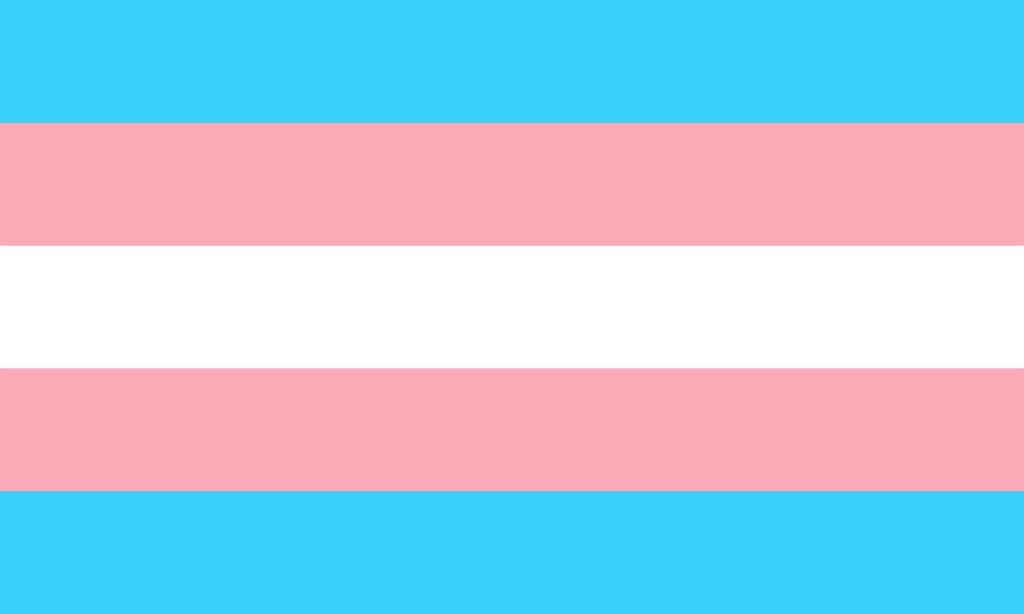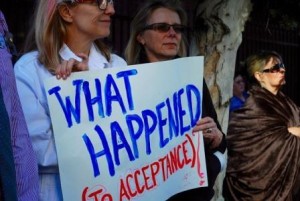- Calls to this hotline are currently being directed to Within Health, Fay or Eating Disorder Solutions
- Representatives are standing by 24/7 to help answer your questions
- All calls are confidential and HIPAA compliant
- There is no obligation or cost to call
- Eating Disorder Hope does not receive any commissions or fees dependent upon which provider you select
- Additional treatment providers are located on our directory or samhsa.gov
Gender Inclusivity & Awareness in Eating Disorder Treatment

Contributor: Micah Hammond, LPCC, Director of Training & Program Development at The Lotus Collaborative
Transgender and nonbinary (TGNB) individuals suffering from an eating disorder deserve an eating disorder treatment experience that is inclusive, gender affirming, and relevant to their struggles. Fortunately, there is a growing awareness of the historical bias towards serving cisgender white women in eating disorder treatment.
This awareness is thanks to the efforts of TGNB individuals speaking up about their experiences with eating disorders in books, blogs, and social media campaigns. Their call to make eating disorder treatment more gender inclusive is being heard.
There is increasing research focused on understanding the experience of TGNB people with disordered eating patterns. This research is demonstrating both the higher risk of eating disorders for this community and the overwhelmingly negative experiences these individuals have in their attempts to receive treatment [1].
A study published in Journal of Adolescent Health by Diemer et al. (2015) found that transgender students were 4.62x more likely to have an eating disorder diagnosis than the reference group of cisgender heterosexual women, and confirmed that lesbian, gay and bisexual students were also at higher risk, though less than the transgender students [2].
There is no one cause that contributes to this higher prevalence, but many personal accounts point to constant minority stress and lack of access to gender-affirming therapy and medical care.
Eating Disorders as a Symptom of Gender Dysphoria
Using behaviors that control weight and/or shape, such as disordered eating, laxative abuse, or over-exercising, maybe a way for TGNB individuals to make the physical changes they need to affirm their gender when medical care is not accessible.
Affirmation of gender may come from both external and internal sources, meaning that for some people, it is imperative that the world reads them in a gender-affirming way, while for others, it is the internal shift and personal affirmation that reduces distress.
In a 2017 study by Testa et al., it was shown that gender-affirming medical care increases the experience of affirmation. This, in turn, increases the experience of body satisfaction and reduces disordered eating symptoms.
This study even suggests that feeling satisfied with one’s body can reduce eating disorder symptoms even when there is no increase in affirmation from others [3]. There is a powerful link between feeling unsafe in one’s body or hatred towards one’s body and using behaviors to control the shape, weight, and physical experience of one’s body.
Medical interventions certainly support TGNB people in experiencing an increase in both internal and external affirmation. However, not all TGNB people want gender-affirming medical care. For these individuals, it may be supportive to explore the idea of eating disorder behaviors as protective or affirmation-building.
 In general, eating disorders are described as a set or pattern of maladaptive coping skills that help an individual respond to environmental stress and/or genetic factors. Whether a person desires gender-affirming medical care or not, it is useful to think of an eating disorder as a way that TGNB individuals are trying to protect themselves from an overwhelming experience of body dissatisfaction, gender dysphoria, and potentially even body hatred.
In general, eating disorders are described as a set or pattern of maladaptive coping skills that help an individual respond to environmental stress and/or genetic factors. Whether a person desires gender-affirming medical care or not, it is useful to think of an eating disorder as a way that TGNB individuals are trying to protect themselves from an overwhelming experience of body dissatisfaction, gender dysphoria, and potentially even body hatred.
Eating Disorders as a Symptom of Minority Stress
While body dissatisfaction is one important contributing factor to the higher prevalence of eating disorders in the TGNB community, it is certainly not the only one. In a study by Gordon et al. in 2016, the trans women interviewed stated that their disordered eating was influenced by a combination of body dissatisfaction, emotional distress, the need for gender affirmation, and a lack of access to gender-affirming care.
This study puts forth a conceptual framework to explain the higher risk that names structural issues, like economic deprivation and social oppression, and societal issues, like feminity ideals and discrimination, as the main contributing factors [4].
Eating disorders in the TGNB community cannot be simplified into personal attempts to make one’s body look a particular way. There is a greater complexity that needs to be explored, understood, and addressed to support TGNB individuals recovering from eating disorders.
Societal and cultural ideals of gender (masculinity, femininity, and androgyny) are imposed on body shape, size, anatomy, facial expressions, gestures, movement, and posture. In essence, we are encouraged to perform our gender through our physical appearance and receive constant feedback about how we are being perceived by others.
For the TGNB community, this feedback comes as systemic oppression, discriminatory policies and actions, unwanted comments or opinions, gender policing in personal interactions or social media, and so many more microaggressions.
This daily barrage of rejection, exclusion, and hatred is known as minority stress, and it has significant impacts on physical health and psychological wellbeing [5].
Just as gender affirmation can be internal and external, gender discrimination or non-affirmation can be internal and external. External stressors include rejection, non-affirmation, victimization, and discrimination, while internal stressors include internalized transphobia, negative expectations, and nondisclosure. Increased experiences of these external and internal stressors have been correlated with higher instances of suicidal ideation in TGBN people [6].
Now we can see that an eating disorder is not only a set of maladaptive coping skills but also armor that the nonbinary or transgender person puts on every day to survive.
Considerations in Eating Disorder Treatment Settings – Shifting the Conversation
In treatment settings, there is an emphasis on recovering through changing behavior related to food or exercise and changing thoughts related to weight and body shape. While these changes in behavior and thought are often crucial for the physical and emotional well being of those in recovery, how can we expect someone to set down their armor when society continues to hurl stones?
If the beliefs and actions that make up an eating disorder are protecting the individual, then the process of recovery needs to include other ways of self-protection.
 Focusing on the function of the eating disorder can start to illuminate ways that those functions can be replaced. There are very real instances of violence against the TGNB community, so removing protective functions needs to be done slowly and thoughtfully.
Focusing on the function of the eating disorder can start to illuminate ways that those functions can be replaced. There are very real instances of violence against the TGNB community, so removing protective functions needs to be done slowly and thoughtfully.
The function of any behavior needs to be placed in a trauma-informed lens. For example, if the function of an eating disorder is to manage emotional dysregulation caused by minority stress, then the root issue is actually the oppressive systems around the individual.
Exploring what can change in the external world needs to be included in treatment. Identify the barriers to recovery that are systemic and cultural so that these can be addressed one at a time.
A study by Testa et al. in 2015 points the way and outlines nine constructs that impact gender minority stress and resilience factors: gender-related discrimination, gender-related rejection, gender-related victimization, non-affirmation of gender identity, internalized transphobia, negative expectations for future events, nondisclosure, community connectedness, and pride [7].
These are the factors that need to be talked about in treatment. These are the factors that need support so that TGNB individuals have the space to recover.
Eating disorder treatment for TGNB individuals needs to include support in reducing the daily experiences of gendered violence. This may be a long and slow process, but it can start by finding environments and people that foster gender-affirmation, body satisfaction, and recovery.
TGNB people need a treatment setting that is actively working to reduce gendered violence and microaggressions. They need a space that reflects their identities and provides the message that they can recover.
There are more and more TGNB people speaking up about their own recovery experiences, and these voices can be included in treatment settings. These amazing role models can foster hope and demonstrate that it is possible to put on a different set of armor to survive in this society.
References:
[1] Duffy, M., Henkel, K., Earnshaw, V. (2016). Transgender Clients’ Experiences of Eating Disorder Treatment. Journal of LGBT Issues in Counseling, 10, 136-149.[2] Diemer E., Grant J., Munn-Chernoff M., Patterson D., Duncan A. (2015). Gender identity, sexual orientation, and eating-related pathology in a national sample of college students. Journal of Adolescent Health, 57, 144-149.
[3] Testa, R. J., Rider, G. N., Haug, N. A., & Balsam, K. F. (2017). Gender confirming medical interventions and eating disorder symptoms among transgender individuals. Health Psychology, 36(10), 927–936.
[4] Gordon A., Austin S., Krieger, N., White Hughto, J., Reisner, S. (2016) “I have to constantly prove to myself, to people, that I fit the bill”: Perspectives on weight and shape control behaviors among low-income, ethnically diverse young transgender women. Social Science & Medicine, 165, 141-149.
[5] Kelleher, C. (2009). Minority stress and health: Implications for lesbian, gay, bisexual, transgender, and questioning (LGBTQ) young people. Counseling Psychology Quarterly, 22, 373-379.
[6] Testa, R. J., Michaels, M. S., Bliss, W., Rogers, M. L., Balsam, K. F., Joiner, T. (2017) Suicidal ideation in transgender people: Gender minority stress and interpersonal theory factors. Journal of Abnormal Psychology, 126(1), 125-136.
[7] Testa, R. J., Habarth, J., Peta, J., Balsam, K., & Bockting, W. (2015). Development of the Gender Minority Stress and Resilience Measure. Psychology of Sexual Orientation and Gender Diversity, 2(1), 65–77.
About the Author:
 Micah Hammond, LPCC, works as the Director of Training and Program Development at The Lotus Collaborative, a holistic eating disorder treatment center in Santa Cruz and San Francisco. She focuses on supporting clients addressing eating disorders, trauma, anxiety, depression, and sexual identity exploration. She is passionate about supporting gender-diverse, nonbinary, and transgender clients from a gender-affirmative approach. Micah is a queer cisgender woman who continuously educates herself and pursues training in order to provide gender-affirming therapy to the trans, nonbinary, and queer communities.
Micah Hammond, LPCC, works as the Director of Training and Program Development at The Lotus Collaborative, a holistic eating disorder treatment center in Santa Cruz and San Francisco. She focuses on supporting clients addressing eating disorders, trauma, anxiety, depression, and sexual identity exploration. She is passionate about supporting gender-diverse, nonbinary, and transgender clients from a gender-affirmative approach. Micah is a queer cisgender woman who continuously educates herself and pursues training in order to provide gender-affirming therapy to the trans, nonbinary, and queer communities.
The opinions and views of our guest contributors are shared to provide a broad perspective on eating disorders. These are not necessarily the views of Eating Disorder Hope, but an effort to offer a discussion of various issues by different concerned individuals.
We at Eating Disorder Hope understand that eating disorders result from a combination of environmental and genetic factors. If you or a loved one are suffering from an eating disorder, please know that there is hope for you, and seek immediate professional help.
Published March 2, 2020, on EatingDisorderHope.com
Reviewed & Approved on March 2, 2020, by Jacquelyn Ekern MS, LPC

The EatingDisorderHope.com editorial team comprises experienced writers, editors, and medical reviewers specializing in eating disorders, treatment, and mental and behavioral health.

